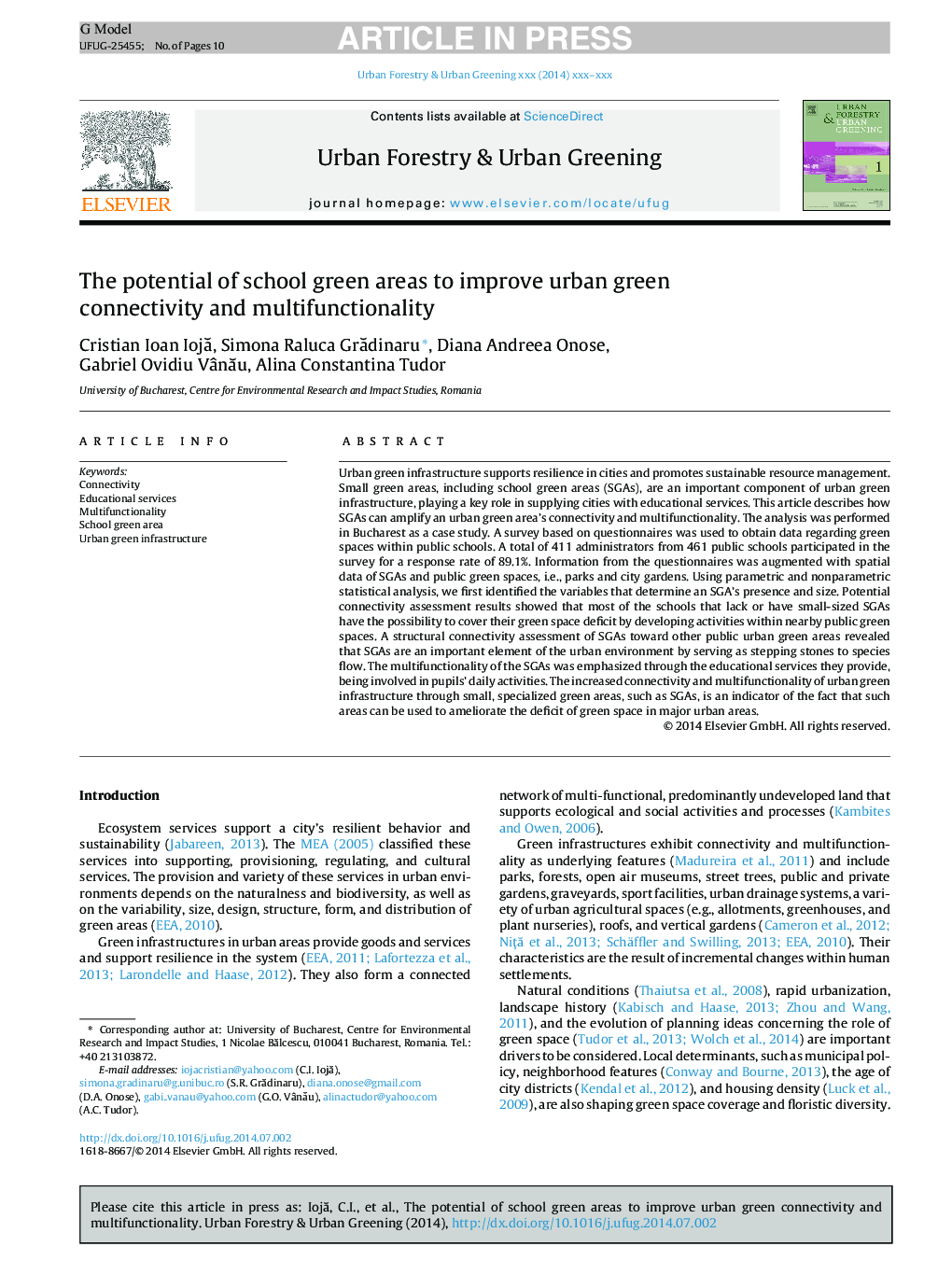| Article ID | Journal | Published Year | Pages | File Type |
|---|---|---|---|---|
| 10252171 | Urban Forestry & Urban Greening | 2014 | 10 Pages |
Abstract
Urban green infrastructure supports resilience in cities and promotes sustainable resource management. Small green areas, including school green areas (SGAs), are an important component of urban green infrastructure, playing a key role in supplying cities with educational services. This article describes how SGAs can amplify an urban green area's connectivity and multifunctionality. The analysis was performed in Bucharest as a case study. A survey based on questionnaires was used to obtain data regarding green spaces within public schools. A total of 411 administrators from 461 public schools participated in the survey for a response rate of 89.1%. Information from the questionnaires was augmented with spatial data of SGAs and public green spaces, i.e., parks and city gardens. Using parametric and nonparametric statistical analysis, we first identified the variables that determine an SGA's presence and size. Potential connectivity assessment results showed that most of the schools that lack or have small-sized SGAs have the possibility to cover their green space deficit by developing activities within nearby public green spaces. A structural connectivity assessment of SGAs toward other public urban green areas revealed that SGAs are an important element of the urban environment by serving as stepping stones to species flow. The multifunctionality of the SGAs was emphasized through the educational services they provide, being involved in pupils' daily activities. The increased connectivity and multifunctionality of urban green infrastructure through small, specialized green areas, such as SGAs, is an indicator of the fact that such areas can be used to ameliorate the deficit of green space in major urban areas.
Related Topics
Life Sciences
Agricultural and Biological Sciences
Forestry
Authors
Cristian Ioan IojÄ, Simona Raluca GrÄdinaru, Diana Andreea Onose, Gabriel Ovidiu VânÄu, Alina Constantina Tudor,
